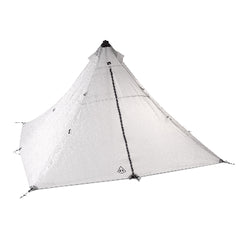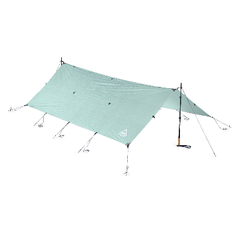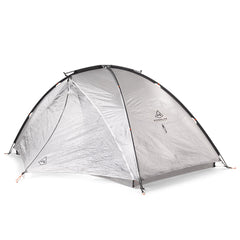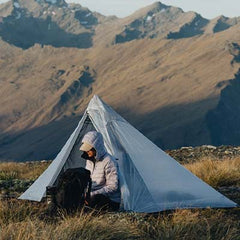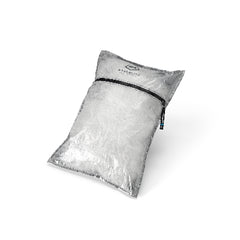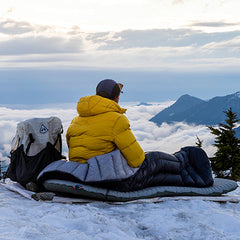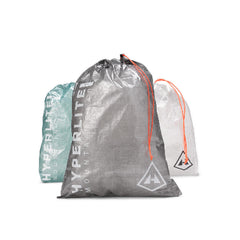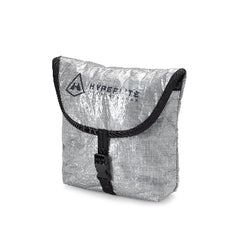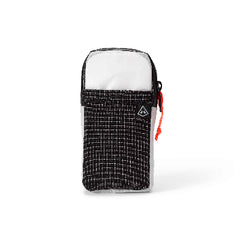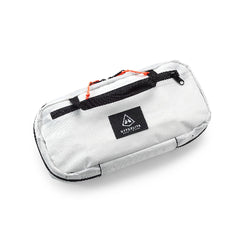Words and Photos from Rebecca Sperry
As an avid hiker, I have always felt that it is important that we, as a community, give back to the trails that provide so much to us. However, the amount of manpower it takes to maintain our trails is mind-boggling, and sadly, a lot of the people that are volunteering are becoming too old to continue doing so. While I understand that most people who are not retired can’t devote dozens of hours a year to do trail work, I find it hard to believe that the vast majority of us can’t take a few hours a year to help on a trail in our local areas. I also know that it can be very intimidating to consider volunteering to do trail work.
When I first heard about trail adopters, I felt like I wasn’t qualified. I have zero experience using hand tools, and I don’t consider myself to be the strongest hiker. Would I be strong enough to carry the equipment? How would I know what to do? Thankfully, when you sign up to volunteer, you’re trained on how to maintain your trail, or you work as a group and are given training on what you need to be doing.

As an adopter, you are doing first-level maintenance. In the White Mountain National Forest, this entails cleaning out water bars, brushing the trail, and clearing the trail corridor. The WMNF provides tools, and you must attend training before working on your trail. After completing training and working on my own trail, I felt an incredible sense of pride in the work I did. It was empowering to go out into the middle of the woods with hand tools and work, especially as a female. What seemed incredibly daunting and something that I was not qualified to do became another way to enjoy my local national forest and give back to the trails that have given me so much.
In 2021, I adopted a trail in my local national forest. After adopting and talking about it publicly, I realized that a lot of people wanted to know more about how to adopt or help out in their own local forests. However, they didn’t know where to start. This led me to research my own to find out more about how people can volunteer on their own trails anywhere in the country. I have compiled a list of the different organizations that manage our trail systems across the United States to make it easier for someone interested in doing trail work to volunteer.

THE BIG FIVE
Bureau of Land Management - Manages one in every ten acres of land in the United States, including 6,000 miles of trails spread across eighteen national scenic trails found in fifteen states. In terms of volunteering with the “BLM” information can be found here on how to reach your state volunteer coordinator. The most well-known volunteer opportunity offered through the BLM is National Public Lands Day.
National Park Service - Oversees over 85 million acres of land and 423 areas across the country, including national monuments, parks, military parks, etc. Volunteer opportunities can be found here.
National Trails System - Overseen by the National Park Service, according to their website, “the National Trails System consists of 30 national scenic and historic trails, and more than a thousand recognized regional or local national recreational trails and several side or connecting trails.” Volunteer opportunities can be found here.
United States Forest Service - This organization manages over 77 million acres of land across the United States. In terms of volunteering in the national forests, this is the biggest agency that oversees volunteer opportunities. Further information can be found here on how to volunteer with the USFS.
Volunteer.gov - In terms of volunteer opportunities across all government-run organizations (BLM, USFS, National Trail Systems, etc.), volunteer.gov serves as a one-stop-shop. If trying to figure out what agency oversees things in your state is too complicated, then go to volunteer.gov and search for what volunteer opportunities are open in your area.

VOLUNTEER OPPORTUNITIES BY NATIONAL SCENIC TRAIL
There are a large number of local organizations that maintain and manage the national scenic trails that have been designated by the National Trail System Act. Although this is not a comprehensive list of all of the historic and recreation trails in the United States, it encompasses the designated national scenic routes in the US.

VOLUNTEER OPPORTUNITIES BY STATE
On a local level, there are dozens of groups and organizations that manage and maintain trails in each of the United States. In addition, dozens of local state parks can also be great places to volunteer time. The two resources listed below are the best resources that I could find in order to know who to volunteer with locally.
Trail Organizations By State - This website is a godsend for anyone who wants to know every organization that is responsible for maintaining trails or public lands within every state in the United States. I highly recommend checking out this site to find out what organizations are out there working the trails in your state.
State Parks - This website links to the state parks that are found within each of the 50 states in the United States.

A DAY IN THE LIFE OF A TRAIL ADOPTER
To give some background about what trail work looks like (and hopefully to alleviate some anxiety about the job), I would like to offer a summary of what I do twice a year to maintain my trail. Because it is located partially within a wilderness boundary, some of the maintenance will vary, but overall it looks the same regardless of location.
The first time that I set out to maintain my trail, I brought a hand saw and pair of loppers with me. Because my trail is several miles into the wilderness, I wanted to go into the woods prepared to do work. If my trail was shorter and easier to access, the first visit I may have just gone out and walked the trail, just to get a feel for what tools I would need. For example, my trail doesn’t have water bars, so carrying a combo tool would’ve been pointless weight. (I knew this because I had hiked my trail previously before adopting it.)

After determining what tools I need to maintain my trail, I set out to complete level one maintenance twice a year (spring and fall). When I first adopted it, my trail needed a lot of brushing done to it. This took several hours and multiple trips to complete. I followed the protocols for wilderness corridors versus regular trail corridors (wilderness corridors are 3’x6’ versus 4’x8’ for non-wilderness areas) and cleared the brush that was impeding the corridor. If there were blowdowns that cannot be climbed over or gone under, I made note of where they were on trail using my GPS watch to determine mileage markers. Then, when I submitted my report to my contact at the forest service, I let them know where these blowdowns were. I also made note of any other things that might need to be addressed (washed out sections, for example).
Trail adopters are level one maintenance which means we clear waterbars, brush the trail, and clear minor blowdowns. Last on the list of responsibilities of trail adopters is to blaze the trail. In my training session, we were told that blazing is a last level thing to worry about and that the forest service was more concerned with brushing and water bars than blazing but this will vary depending on where you’re trained.

WHAT TOOLS I USE
Because every trail is unique, the best thing to do is to walk your trail and determine what tools you will need to maintain it. The main tool that I use for my trail is a pair of lopping shears. The most popular tools that are used for maintaining trails in New England are loppers, a hand saw, and either a grub hoe or a combo tool. Again, since my trail doesn’t have water bars to clear, I don’t carry the grub hoe/combo tool. This tool can be used to clean out water bars, to rebuild them, and to do basic maintenance to the trail corridor. The loppers are used to clear the corridor of brush or small branches that need to be cut to widen the corridor. The hand saw can also be used to clear a bit larger blowdowns or branches that might be impeding the trail corridor. The US Forest Service provides access to all of these tools for volunteers but a lot of us have our own tools because it’s just easier.
*In New Hampshire, you can also receive additional training if you choose to on using an ax and in order to use one on your trail you must receive the additional training with the forest service.

THE BEST TIMES OF YEAR TO VOLUNTEER
In New Hampshire, the two most important times to do trail work are in the spring after the snow has melted and in the fall before the first snow. We brush out our trails, clean out water bars, cut down small blowdowns, and re-blaze trail markers during these times. Then, we report to our agency contact person about what additional work needs to be done. The spring is when the White Mountain National Forest (which is the organization I volunteer with) will train new trail adopters, so this is the best time to sign up to adopt a trail. However, in the fall, a large number of organizations work to “put the trails to bed” before winter arrives. National Trails Day (which was June 4 this year) is also a great opportunity to work with a local organization on trail work.
What I’ve learned through adopting a trail is to appreciate our trails that much more because of how much work goes into maintaining them. I’ve also learned why the trails are designed the way they are, how important it is to hike on the trail corridor instead of making side paths around water or mud, what the different dimensions of the corridor are, and so much more. Most of all, though, I’ve learned that it is my responsibility to help maintain my local trails and that if we don’t take care of them, they will deteriorate. Please consider volunteering on one of your local trails. Even if it’s only once a year, your participation matters much more than you realize.

Rebecca is an avid hiker who spends the majority of her free time either hiking in New England or writing. In 2020, she was diagnosed with Breast Cancer and continued to hike throughout an entire year of aggressive treatment. She is a strong proponent of the importance of staying active, especially as a way to alleviate some of the side effects of cancer treatment. You can follow her journey on her instagram or her website: rebeccasperry.com




